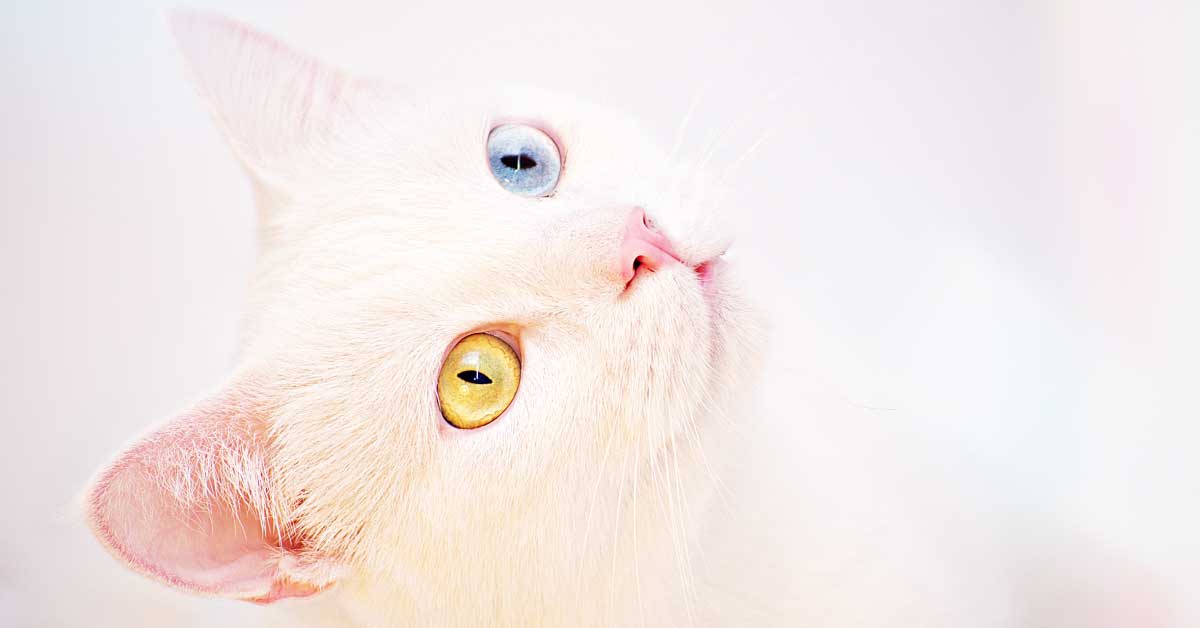Yes, cats can see colors. They have a unique vision system other than any creature in the world. Let’s find out surprising facts about cat vision and answer one prevalent question that piques our curiosity – can cats see color?
Table of Contents
Understanding Cat Vision

- Rod and Cone Cells
Cats have a higher number of rod cells in their eyes, optimizing their vision for low-light conditions. That’s why they can see in the dark better than humans.
- Limited Cone Cells
Unlike humans with three types of cone cells for color perception, cats only have two, impacting their ability to see the full spectrum of colors.
- Implications for Color Vision
The unique combination of rod and cone cells influences how cats perceive and interpret the world visually.
- Night Vision Dominance
The abundance of rod cells makes cats adept at seeing in low-light environments, contributing to their exceptional night vision.
Does Cat See Only in Black and White
No, cats do not see only in black and white. While it’s true that cats have fewer cone cells in their eyes compared to humans, and their color vision is not as extensive as ours, they can still perceive a range of colors. Cats are believed to see the world in a more muted and subdued color palette, with a focus on shades of blue and green. They may not distinguish between certain colors as vividly as humans, but it is inaccurate to say that they see the world in black and white.
The Role of Cone Cells
The role of cone cells in vision is crucial for perceiving colors in both humans and animals, including cats. Cone cells are photoreceptor cells located in the retina of the eye, responsible for color vision and visual acuity. Here’s a breakdown of the role of cone cells:
- Color Perception
Cone cells enable the perception of different colors in the visible light spectrum. Humans typically have three types of cone cells, each sensitive to specific wavelengths associated with red, green, and blue light. Cats, however, have two types of cone cells.
- Wavelength Sensitivity
Each type of cone cell is sensitive to a specific range of wavelengths. This sensitivity allows the brain to interpret and differentiate between various colors based on the combination of signals received from these cones.
- Contribution to Vision Sharpness
Cone cells also contribute to visual acuity, allowing for sharper and more detailed vision, especially in well-lit conditions. This is distinct from rod cells, which are more sensitive to low light and contribute to night vision.
- Impact on Color Discrimination
The number and types of cone cells influence the richness and range of colors that can be discriminated. In cats, having fewer cone cells than humans impacts their color vision, making it different from the human experience.
Shades of the Feline Rainbow
The “Shades of the Feline Rainbow” refers to the colors that cats may perceive in their visual spectrum. While their color vision is not as extensive as that of humans, cats are believed to have a preference for certain hues.
- Colors that Stand Out
Cats are thought to be more sensitive to blues and greens, and they may see these colors more vividly than others. Certain colors may be more pronounced in a cat’s vision, influencing their interactions with objects or surroundings.
- Colors that Appear Muted
Certain colors may appear muted in a cat’s vision, influencing their cone cells and interactions with objects or surroundings. Reds and oranges may appear less vibrant in a cat’s vision. These colors might be perceived as more subdued or even indistinguishable from each other.
Practical Implications
Understanding feline color perception goes beyond mere curiosity. It influences how we design their toys, choose their bedding, and create environments that cater to their visual preferences.
- Impact on Toy Preferences
Understanding a cat’s color perception is crucial when selecting toys. Certain colors may be more appealing to them, influencing their engagement and interest in play.
- Choosing Cat-Friendly Colors
When designing living spaces or selecting accessories for cats, considering their color preferences becomes essential. Opting for colors that align with their vision can create a more visually stimulating and comfortable environment.
- Designing Cat Products
Manufacturers of cat products, from food bowls to scratching posts, can enhance their designs by taking into account feline color perception. This ensures that the products are not only functional but also visually appealing to cats.
- Environmental Considerations
Tailoring the colors in a cat’s environment, such as the choice of furniture and decor, can positively impact their overall well-being. Creating a visually enriching space aligns with their unique visual preferences.
Myths and Facts
Several common myths surround cat vision, leading to misunderstandings about how cats perceive the world. Here are some of these myths:
- Cats See in Black and White
This is perhaps the most widespread myth. In reality, while cats may not perceive colors as vividly as humans, they are not limited to seeing only in black and white.
- Cats Can’t See Colors
Contrary to popular belief, cats can see some colors, but their color vision is not as extensive as humans. They are more sensitive to blues and greens.
- Cats Can See in Total Darkness
While cats have excellent night vision due to a higher number of rod cells, they cannot see in complete darkness. They still need some ambient light to navigate their surroundings effectively.
- Cats See Like Dogs
Cats and dogs have different visual capabilities. While both have adaptations for low-light vision, cats have a more developed ability to discern details in low-light conditions compared to dogs.
- Cats See Like Humans
Cat vision differs significantly from human vision. Cats have fewer cone cells, affecting their perception of colors, and their overall visual system is adapted to a different set of environmental conditions.
- Cats Are Indifferent to Colors
Cats may have preferences for certain colors. While not all cats respond the same way to colors, some studies suggest that they may be attracted to or repelled by specific hues.
These facts help to provide a more accurate understanding of cats’ world and promote better care and interaction with our feline friends.
Conclusion
In the colorful world of cat vision, cats may not experience the rainbow in the same way we do, their unique perspective adds a layer of fascination to our interactions. By embracing and accommodating their distinctive vision, we can make a deeper connection with our feline friend.


